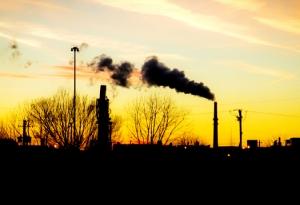ClimateCooling coal emissions would clean air, lower health, climate-change costs
In the United States there are about 1,400 electric-generating unit powered by coal, operated at about 600 power plants; the estimated health costs of burning coal in the United States are in the range of $150 billion to $380 billion, including 18,000-46,000 premature deaths, 540,000 asthma attacks, 13,000 emergency room visits, and two million missed work or school days each year; scientists estimate that implementing large-scale cryogenic systems into coal-fired plants would reduce overall costs to society by 38 percent through the sharp reduction of associated health-care and climate-change costs

Cooling coal emissions dramatically lowers pollutant levels // Source: shafaqna.com
Refrigerating coal-plant emissions would reduce levels of dangerous chemicals that pour into the air, including carbon dioxide by more than 90 percent, at a cost of 25 percent efficiency, according to a simple math-driven formula designed by a team of University of Oregon physicists.
The computations for such a system, prepared on an electronic spreadsheet, appeared in Physical Review E, a journal of the American Physical Society.
A University of Oregon release reports that in a separate, unpublished and preliminary economic analysis, the scientists argue that the “energy penalty” would raise electricity costs by about a quarter but also reap huge societal benefits through subsequent reductions of health-care and climate-change costs associated with burning coal. An energy penalty is the reduction of electricity available for sale to consumers if plants used the same amounts of coal to maintain electrical output while using a cryogenic cleanup.
“The cryogenic treatment of flue gasses from pulverized coal plant is possible, and I think affordable, especially with respect to the total societal costs of burning coal,” said UO physicist Russell J. Donnelly, whose research team was funded by the U.S. Department of Energy for the work detailed in the published journal article.
“In the U.S., we have about 1,400 electric-generating unit powered by coal, operated at about 600 power plants,” Donnelly said. That energy, he added, is sold at about 5.6 cents per kilowatt-hour, according to a 2006 Congressional Budget Office estimate. “The estimated health costs of burning coal in the U.S. are in the range of $150 billion to $380 billion, including 18,000-46,000 premature deaths, 540,000 asthma attacks, 13,000 emergency room visits and two million missed work or school days each year.”
In their separate economic analysis, Donnelly and UO research assistant Robert E. Hershberger, also a co-author on the journal paper, estimate that implementing large-scale cryogenic systems into coal-fired plants would reduce overall costs to society by 38 percent through the sharp reduction of associated health-care and climate-change costs. Not in the equation, Donnelly said, are the front-end health-care costs involved in coal extraction through mining.
The release notes that the cryogenic concept is not new. Donnelly experimented briefly in the 1960s with a paper mill in Springfield, Oregon, successfully to remove odor-causing gasses filling the area around the plant using cryogenics. Subsequently the National Science Foundation funded a major study to capture sulfur dioxide emissions — a contributor to acid rain — from coal burning
